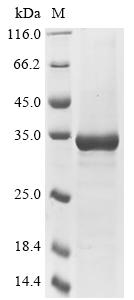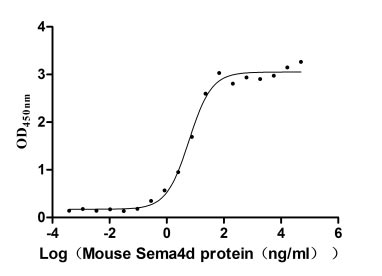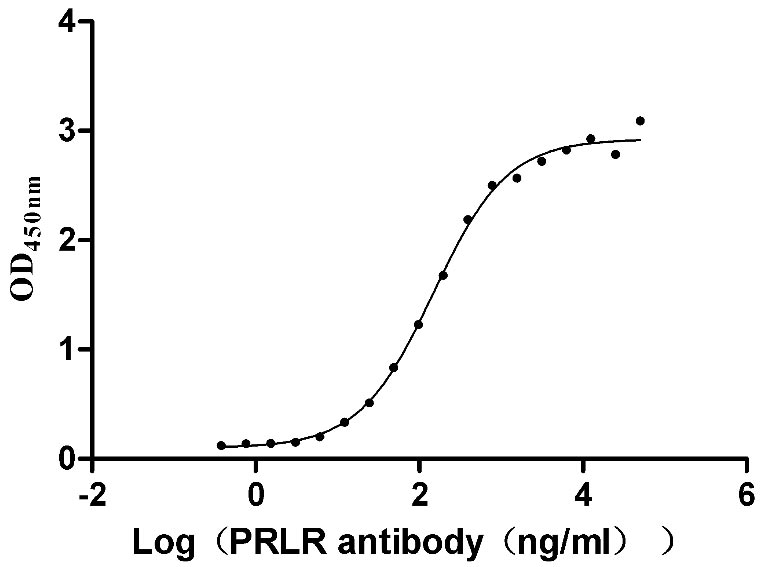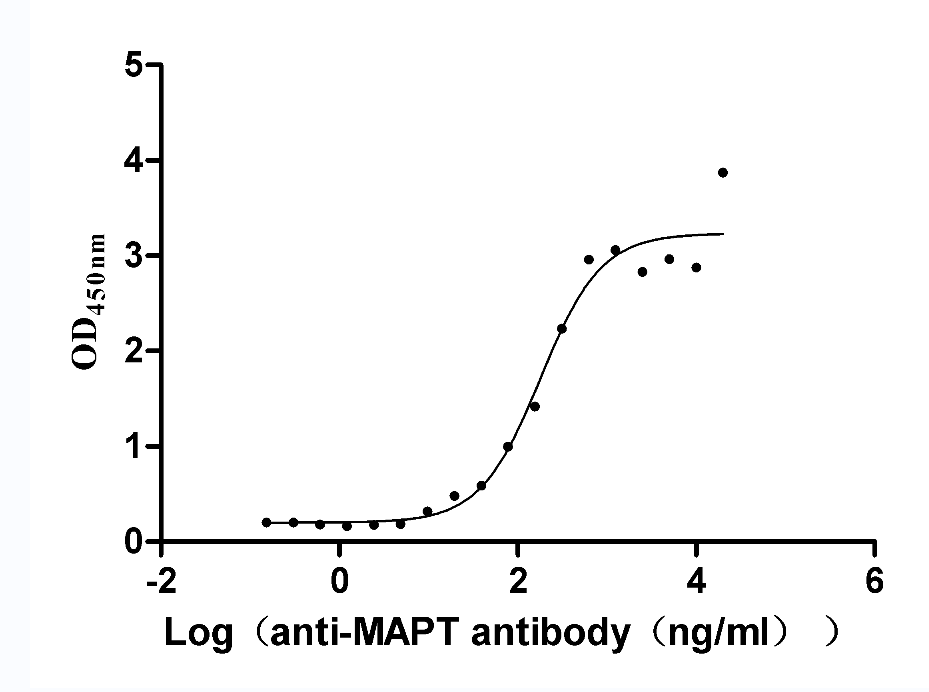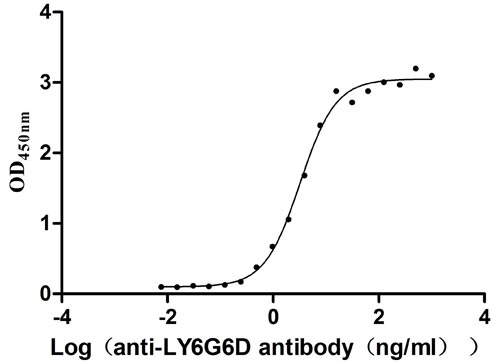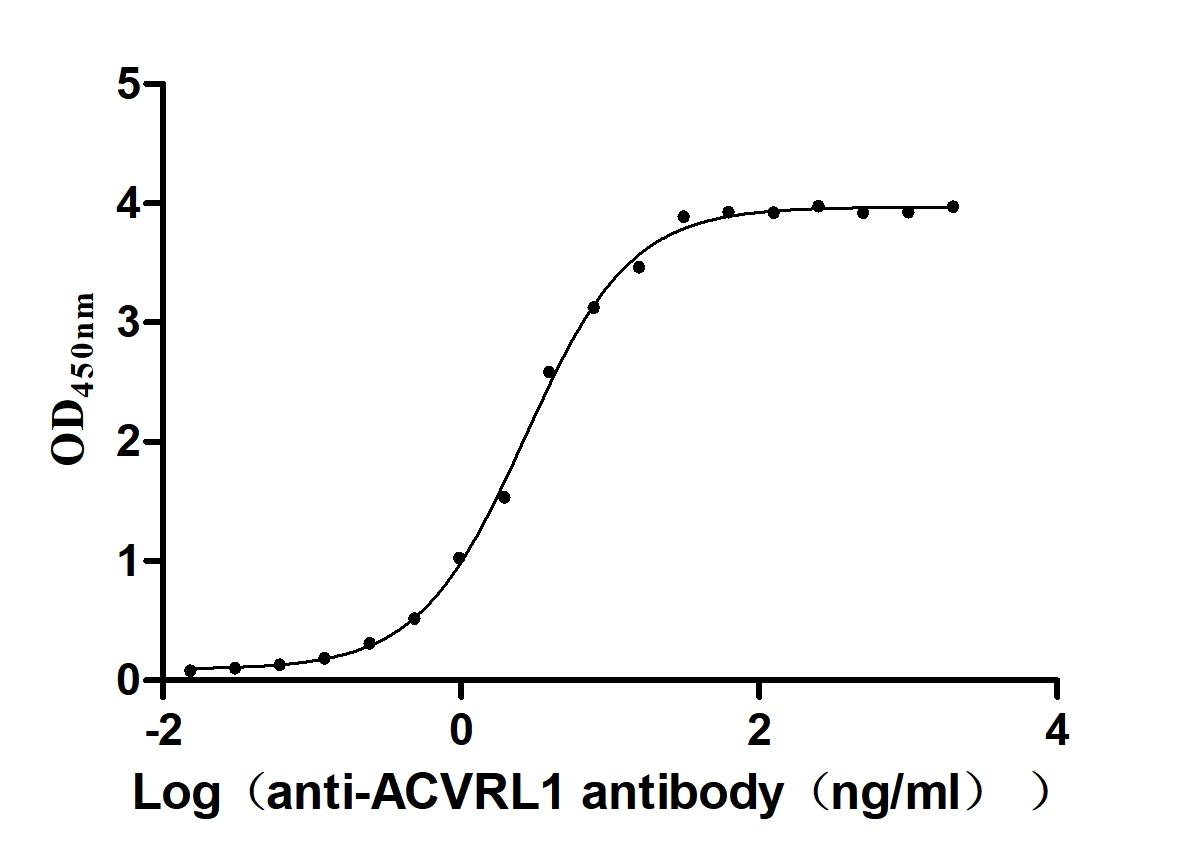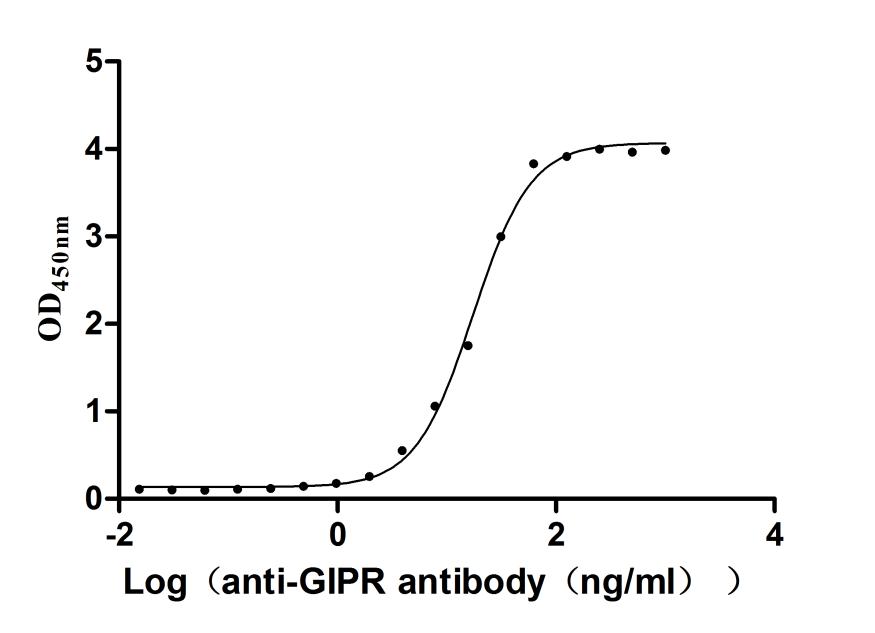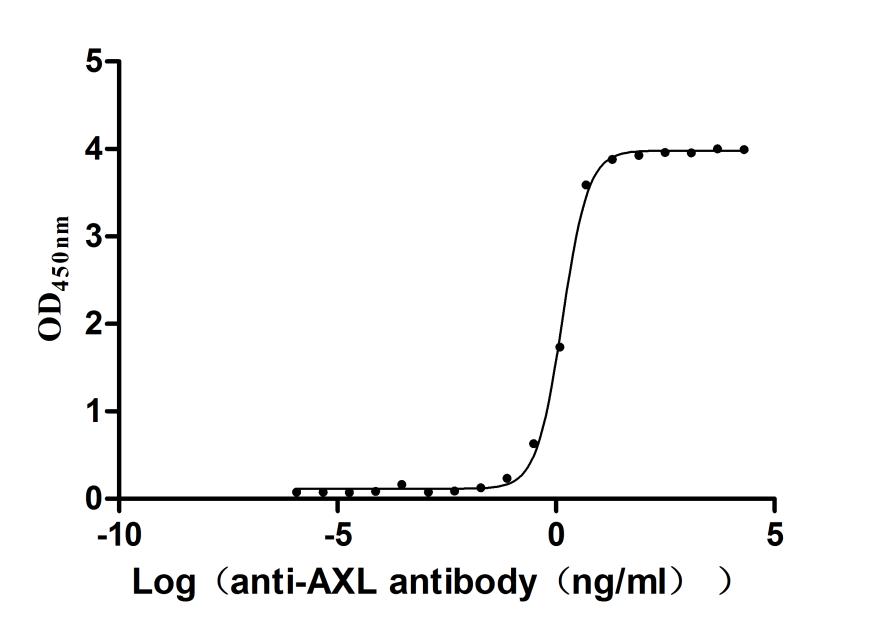Recombinant Semliki forest virus Polyprotein P1234, partial
In Stock-
中文名稱:Recombinant Semliki forest virus Polyprotein P1234,partial
-
貨號:CSB-EP362421SET
-
規(guī)格:¥2328
-
圖片:
-
其他:
產(chǎn)品詳情
-
純度:Greater than 85% as determined by SDS-PAGE.
-
基因名:N/A
-
Uniprot No.:
-
種屬:Semliki forest virus (SFV)
-
蛋白長度:Partial
-
來源:E.coli
-
分子量:33.2 kDa
-
表達(dá)區(qū)域:29-260aa
-
氨基酸序列ESLQVTPNDHANARAFSHLATKLIEQETDKDTLILDIGSAPSRRMMSTHKYHCVCPMRSAEDPERLVCYAKKLAAASGKVLDREIAGKITDLQTVMATPDAESPTFCLHTDVTCRTAAEVAVYQDVYAVHAPTSLYHQAMKGVRTAYWIGFDTTPFMFDALAGAYPTYATNWADEQVLQARNIGLCAASLTEGRLGKLSILRKKQLKPCDTVMFSVGSTLYTESRKLLRSWH
Note: The complete sequence may include tag sequence, target protein sequence, linker sequence and extra sequence that is translated with the protein sequence for the purpose(s) of secretion, stability, solubility, etc.
If the exact amino acid sequence of this recombinant protein is critical to your application, please explicitly request the full and complete sequence of this protein before ordering. -
蛋白標(biāo)簽:N-terminal 10xHis-tagged and C-terminal Myc-tagged
-
產(chǎn)品提供形式:Liquid or Lyophilized powder
Note: We will preferentially ship the format that we have in stock, however, if you have any special requirement for the format, please remark your requirement when placing the order, we will prepare according to your demand. -
緩沖液:If the delivery form is liquid, the default storage buffer is Tris/PBS-based buffer, 5%-50% glycerol.If the delivery form is lyophilized powder, the buffer before lyophilization is Tris/PBS-based buffer, 6% Trehalose.
-
復(fù)溶:We recommend that this vial be briefly centrifuged prior to opening to bring the contents to the bottom. Please reconstitute protein in deionized sterile water to a concentration of 0.1-1.0 mg/mL.We recommend to add 5-50% of glycerol (final concentration) and aliquot for long-term storage at -20℃/-80℃. Our default final concentration of glycerol is 50%. Customers could use it as reference.
-
儲存條件:Store at -20°C/-80°C upon receipt, aliquoting is necessary for mutiple use. Avoid repeated freeze-thaw cycles.
-
保質(zhì)期:The shelf life is related to many factors, storage state, buffer ingredients, storage temperature and the stability of the protein itself.
Generally, the shelf life of liquid form is 6 months at -20°C/-80°C. The shelf life of lyophilized form is 12 months at -20°C/-80°C. -
貨期:3-7 business days
-
注意事項(xiàng):Repeated freezing and thawing is not recommended. Store working aliquots at 4°C for up to one week.
-
Datasheet & COA:Please contact us to get it.
相關(guān)產(chǎn)品
靶點(diǎn)詳情
-
功能:Inactive precursor of the viral replicase, which is activated by cleavages carried out by the viral protease nsP2.; The early replication complex formed by the polyprotein P123 and nsP4 synthesizes minus-strand RNAs. As soon P123 is cleaved into mature proteins, the plus-strand RNAs synthesis begins.; The early replication complex formed by the polyprotein P123' and nsP4 synthesizes minus-strand RNAs (Probable). Polyprotein P123' is a short-lived polyprotein that accumulates during early stage of infection (Probable). As soon P123' is cleaved into mature proteins, the plus-strand RNAs synthesis begins (Probable).; Cytoplasmic capping enzyme that catalyzes two virus-specific reactions: methyltransferase and nsP1 guanylyltransferase. mRNA-capping is necessary since all viral RNAs are synthesized in the cytoplasm, and host capping enzymes are restricted to the nucleus (Probable). The enzymatic reaction involves a covalent link between 7-methyl-GMP and nsP1, whereas eukaryotic capping enzymes form a covalent complex only with GMP (Probable). nsP1 capping consists in the following reactions: GTP is first methylated into 7-methyl-GMP and then is covalently linked to nsP1 to form the m7GMp-nsP1 complex from which 7-methyl-GMP complex is transferred to the mRNA to create the cap structure (Probable). NsP1 is also needed for the initiation of the minus-strand RNAs synthesis. Probably serves as a membrane anchor for the replication complex composed of nsP1-nsP4 (Probable). Palmitoylated nsP1 is remodeling host cell cytoskeleton, and induces filopodium-like structure formation at the surface of the host cell.; Multifunctional protein whose N-terminus is part of the RNA polymerase complex and displays NTPase, RNA triphosphatase and helicase activities. NTPase and RNA triphosphatase are involved in viral RNA capping and helicase keeps a check on the dsRNA replication intermediates (Probable). The C-terminus harbors a protease that specifically cleaves and releases the mature proteins. Required for the shutoff of minus-strand RNAs synthesis. Specifically inhibits the host IFN response by promoting the nuclear export of host STAT1. Also inhibits host transcription by inducing rapid proteasome-dependent degradation of POLR2A, a catalytic subunit of the RNAPII complex. The resulting inhibition of cellular protein synthesis serves to ensure maximal viral gene expression and to evade host immune response (Probable).; Seems to be essential for minus-strand RNAs and subgenomic 26S mRNAs synthesis. Displays mono-ADP-ribosylhydrolase activity (Probable). ADP-ribosylation is a post-translational modification that controls various processes of the host cell and the virus probably needs to revert it for optimal viral replication (Probable). Binds proteins of FXR family and sequesters them into the viral RNA replication complexes thereby inhibiting the formation of host stress granules on viral mRNAs (Probable). The nsp3'-FXR complexes bind viral RNAs and probably orchestrate the assembly of viral replication complexes, thanks to the ability of FXR family members to self-assemble and bind DNA (Probable).; Seems to be essential for minus-strand RNAs and subgenomic 26S mRNAs synthesis. Displays mono-ADP-ribosylhydrolase activity. ADP-ribosylation is a post-translational modification that controls various processes of the host cell and the virus probably needs to revert it for optimal viral replication. Binds proteins of G3BP family and sequesters them into the viral RNA replication complexes thereby inhibiting the formation of host stress granules on viral mRNAs. The nsp3-G3BP complexes bind viral RNAs and probably orchestrate the assembly of viral replication complexes, thanks to the ability of G3BP family members to self-assemble and bind DNA.; RNA dependent RNA polymerase. Replicates genomic and antigenomic RNA by recognizing replications specific signals. The early replication complex formed by the polyprotein P123 and nsP4 synthesizes minus-strand RNAs. The late replication complex composed of fully processed nsP1-nsP4 is responsible for the production of genomic and subgenomic plus-strand RNAs.
-
基因功能參考文獻(xiàn):
- Mutation of host cytoskeletal proteins CD2AP and SH3KBP1 binding motif in semliki forest virus (SFV) nonstructural protein nsP3 (Nsp3) abolishes the ability of CD2AP to co-localize with nsP3 and replication complexes of SFV. PMID: 29702546
- Results show the crystal structure of the NTF2-like domain of G3BP-1 in complex with nsP3 protein revealing a poly-complex of G3BP-1 dimers interconnected through the FGDF motifs in nsP3. Although in vitro and in vivo binding studies revealed a hierarchical interaction of the two FGDF motifs with G3BP-1, viral growth curves clearly demonstrated that two intact FGDF motifs are required for efficient viral replication. PMID: 27383630
- Differences in the sequence of Nonstructural Protein 3 affect neurovirulence of Semliki Forest Virus. PMID: 26311875
- Authors show that the C-terminal repeat motifs of nsP3 were sufficient for G3BP binding. PMID: 24623412
- Data show that the nsP3/G3BP interaction also blocks stress granules (SGs) induced by other stresses than virus infection. PMID: 23087212
- These data indicate that the nsP2-induced degradation of Rpb1 is a critical mechanism utilized by the Old World alphaviruses to subvert the cellular antiviral response. PMID: 22514352
- The N terminus of nsP2 protease is required for efficient 2/3 site cleavage. PMID: 22031949
- In general, the lack of nsP1 palmitoylation had a less severe effect on the function of the replication complex in mammalian cells when compared with that in mosquito cells. PMID: 20801176
- The expression of nsP3 or a mutant lacking the 10 C-terminal aa residues repressed the establishment of infection, while the expression of nsP3 lacking 30 C-terminal aa residues led to the reduced synthesis of subgenomic RNA. PMID: 20015978
- Crystal structure of monomeric E1 refined to 3 angstrom resolution is reported with description of amino acids involved in contacts in the virion PMID: 16407067
- Mutations in the protease domain of nsP2 caused defects in nonstructural polyprotein processing and subgenomic RNA synthesis, and all mutations in the helicase domain of nsP2 affected subgenomic RNA production in temperature sensitive mutants. PMID: 16501123
- Deletions in the nsP3 hypervariable domain attenuate virulence after peripheral inoculation and also reduce virulence after intranasal inoculation. PMID: 16528043
- The amphipathic peptide is a crucial element for the membrane association of nsP1 and the replication complex. PMID: 17093195
- A viral mutant, in which the nuclear localization sequence of nsp2 has been rendered inactive, induces a significantly more robust interferon response in infected cells. PMID: 17553895
- Mutations in nsP2 nuclear localization signal affect Semliki forest viral RNA synthesis, protein expression and pathogenicity. PMID: 18272758
- nsP1 is suggested to contain a specific subdomain involved in minus-strand synthesis and interaction with the polymerase nsP4 and the protease nsP2. PMID: 18596091
顯示更多
收起更多
-
亞細(xì)胞定位:[Polyprotein P1234]: Host cytoplasmic vesicle membrane; Peripheral membrane protein.; [Polyprotein P123']: Host cytoplasmic vesicle membrane; Peripheral membrane protein.; [Polyprotein P123]: Host cytoplasmic vesicle membrane; Peripheral membrane protein.; [mRNA-capping enzyme nsP1]: Host cytoplasmic vesicle membrane; Lipid-anchor. Host cell membrane; Lipid-anchor; Cytoplasmic side. Host cell projection, host filopodium.; [Protease nsP2]: Host cytoplasmic vesicle membrane; Peripheral membrane protein. Host nucleus. Host cytoplasm.; [Non-structural protein 3]: Host cytoplasmic vesicle membrane; Peripheral membrane protein.; [Non-structural protein 3']: Host cytoplasmic vesicle membrane; Peripheral membrane protein.; [RNA-directed RNA polymerase nsP4]: Host cytoplasmic vesicle membrane; Peripheral membrane protein.
-
數(shù)據(jù)庫鏈接:
KEGG: vg:922350
Most popular with customers
-
Recombinant Mouse Semaphorin-4D (Sema4d), partial (Active)
Express system: Mammalian cell
Species: Mus musculus (Mouse)
-
Recombinant Human Prolactin receptor (PRLR), partial (Active)
Express system: Mammalian cell
Species: Homo sapiens (Human)
-
Recombinant Rat Microtubule-associated protein tau (Mapt) (Active)
Express system: Mammalian cell
Species: Rattus norvegicus (Rat)
-
Recombinant Human Lymphocyte antigen 6 complex locus protein G6d (LY6G6D) (Active)
Express system: Yeast
Species: Homo sapiens (Human)
-
Recombinant Human Serine/threonine-protein kinase receptor R3 (ACVRL1), partial (Active)
Express system: Baculovirus
Species: Homo sapiens (Human)
-
Recombinant Human Gastric inhibitory polypeptide receptor(GIPR),partial (Active)
Express system: Mammalian cell
Species: Homo sapiens (Human)
-
Recombinant Human Tyrosine-protein kinase receptor UFO(AXL),partial (Active)
Express system: Mammalian cell
Species: Homo sapiens (Human)

